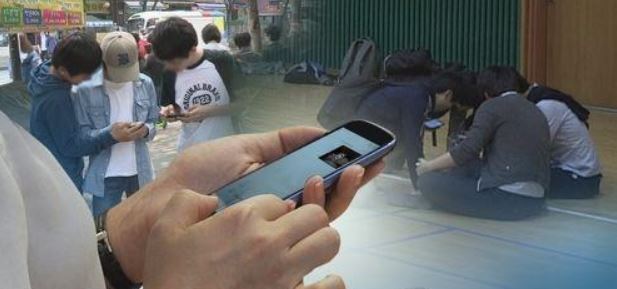VDT syndrome patients grow gradually due to people being glued to smartphones, computers: data
By YonhapPublished : Oct. 25, 2017 - 15:54
The number of people suffering from the visual display terminal syndrome has risen steadily in the past few years as a growing number of people are constantly using smartphones and computer monitors, government data showed Wednesday.
The number of people suffering from the condition increased to 4.1 million last year from 3.81 million in 2012, 3.93 million in 2013, 3.99 million in 2014 and 4.02 million in 2015, according to the statistics released by the National Health Insurance Service.
The five-year total broken down by gender showed 11.6 million females, or 58.4 percent, afflicted by the syndrome, with the number for men standing at 8.26 million, or 41.6 percent.

People with VDT syndrome have herniated lumbar and cervical disks, carpal tunnel syndrome, dry eyes, visual blurring and musculoskeletal symptoms such as neck pain, back pain and shoulder pain.
By age group, those in their 50s had the largest share at 26.5 percent, or 5.26 million people, followed by those in their 40s and 60s at 3.71 million sufferers and 3.70 million sufferers, respectively.
Teen patients rose to 67,000 last year from 63,000 in 2012.
The number of VDT syndrome patients in their 20s also went up to 242,000 last year from 219,000 in 2012.
As many as 82,000 children aged nine or younger saw doctors for VDT syndrome during the past five years.
Medical expenses for the treatment of VDT syndrome jumped to 1.06 trillion won ($940 billion) last year, up from 944 billion won in 2012, 978 billion won in 2013, 1.01 trillion won in 2014 and 1.03 trillion won in 2015.
Out of the total number of VDT syndrome patients over the past five years, 12.9 million people, or 65.2 percent, have seen doctors for a herniated lumbar disk; 4.3 million, or 21.7 percent, for myofascial pain syndrome; 1.43 million, or 7.2 percent, for a herniated cervical disk; 840,000, or 4.2 percent, for carpal tunnel syndrome; and 209,000, or 1.05 percent, for dry eyes. (Yonhap)



















